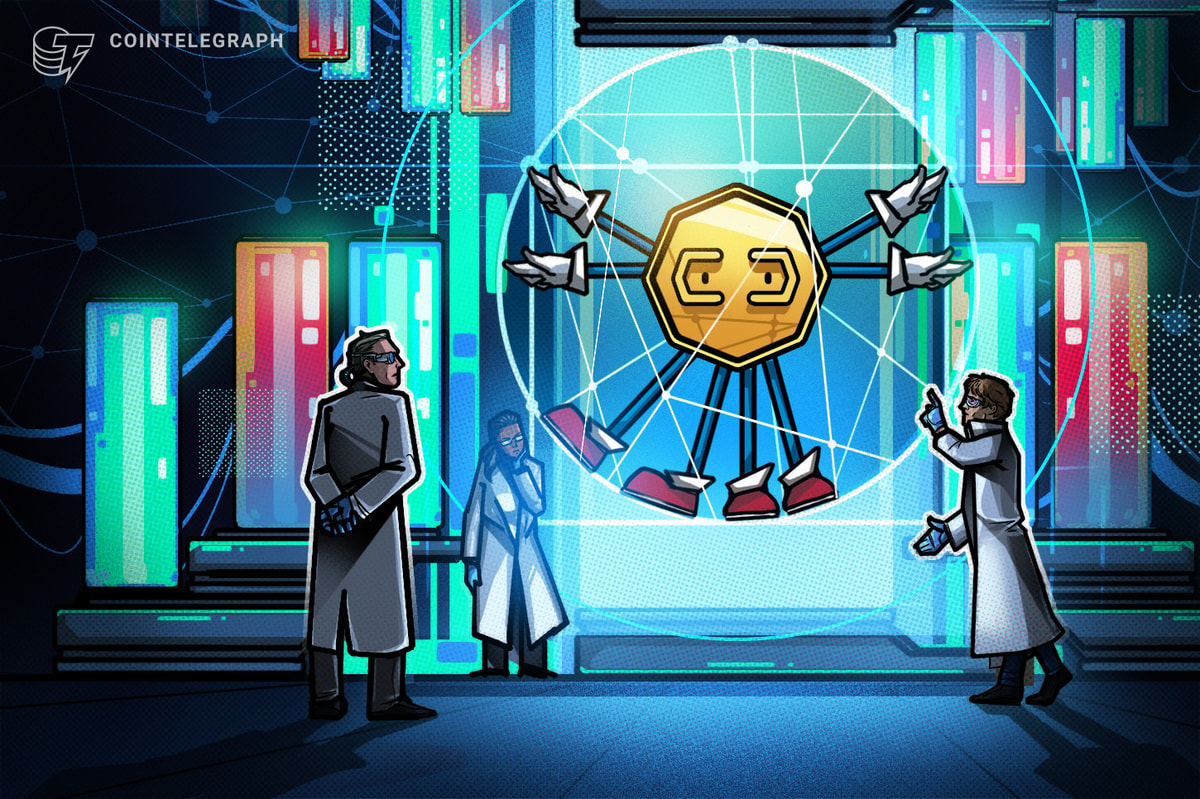The development of the metaverse, as a virtual world that combines elements of the real world with digital creations and experiences, has the potential to generate a new economy. The metaverse could offer users various activities and applications, including social interaction, entertainment, education, commerce, and more. These activities could generate value and economic opportunities for individuals, businesses, and other entities within the metaverse.
Users could earn and spend virtual currency within the metaverse to buy and sell goods and services or use decentralized finance (DeFi) tools and platforms to manage and trade their assets.
The metaverse could also support the creation and trade of unique digital assets, such as non-fungible tokens (NFTs), which could have value within and outside the metaverse. In addition, businesses and other organizations could use the metaverse for marketing, advertising, and other activities that generate revenue.
In my humble opinion, I think it is possible that the development of the metaverse could facilitate the growth of sustainable decentralized finance (DeFi) ecosystems. The metaverse is a virtual world that combines elements of the real world with digital creations and experiences, and it has the potential to support a wide range of activities and applications, including financial ones.
Decentralized finance (DeFi) refers to a class of financial applications and services built on blockchain technology and designed to operate in a decentralized manner, without the need for a central authority. DeFi encompasses a wide range of financial tools and platforms, such as decentralized exchanges, lending and borrowing platforms, insurance, prediction markets, and more.
DeFi’s Future
These tools and platforms allow users to access and interact with financial services and assets more openly, transparent, and securely, potentially enabling greater financial inclusion and autonomy. DeFi is still a largely nascent and evolving field, and its potential impact and limitations are still being explored and debated. Since both metaverse and DeFi are new and debatable. It has potential upsides.
In a metaverse context, DeFi could potentially offer users a more immersive and interactive experience for managing and using their assets, as well as access to a wider range of financial services and opportunities. This could potentially lead to more sustainable DeFi ecosystems, as the increased accessibility and user engagement could drive adoption and growth.
Thoughts on How Decentralization Can Be Used in Metaverses:
1. Use decentralized exchanges to trade assets within the metaverse.
2. Use decentralized lending and borrowing platforms to access credit and earn interest on assets within the metaverse.
3. Use decentralized insurance platforms to protect against risks within the metaverse.
4. Use decentralized prediction markets to speculate on events within the metaverse.
5. Use decentralized governance mechanisms to make decisions and govern communities within the metaverse.
6. Use decentralized identity systems to securely manage and verify identities within the metaverse.
7. Use decentralized reputation systems to assess the trustworthiness of individuals and entities within the metaverse.
8. Use decentralized oracles to provide reliable data and information for use within the metaverse.
9. Use decentralized storage and data management systems to securely store and manage data within the metaverse.
10. Use decentralized automation and smart contract Read this Term platforms to facilitate and automate transactions and interactions within the metaverse.
In theory, a metaverse could facilitate the growth of decentralized finance (DeFi) systems by providing a platform for people to access and interact with these systems in a more intuitive and user-friendly way.
One potential benefit of a metaverse is that it could make it easier for people to understand and use DeFi systems, which can sometimes be complex and difficult to navigate. By providing a visual representation of DeFi protocols and networks, a metaverse could help to demystify these systems and make them more accessible to a wider audience.
Another potential benefit of a metaverse is that it could provide a more engaging and immersive experience for users of DeFi systems. By allowing people to interact with each other and with digital assets in a virtual environment, a metaverse could make DeFi more fun and engaging, potentially increasing user adoption and participation in these systems.
Will Decentralization Work Better in the Metaverse?
Well, decentralization has the potential to offer several benefits in the context of the metaverse, a virtual world that combines elements of the real world with digital creations and experiences. Decentralization could enable users to have greater control and autonomy over their assets and activities within the metaverse, and it could provide a more resilient and secure infrastructure for the metaverse.
Decentralized finance (DeFi) tools and platforms could enable users to manage and trade their assets within the metaverse without relying on a central authority. Decentralized governance mechanisms could allow communities within the metaverse to make decisions and coordinate their activities in a decentralized manner. Decentralized identity systems could provide users with secure and verifiable identities within the metaverse.
It could provide a more resilient and secure infrastructure for the metaverse. Because decentralized systems are distributed across multiple nodes, they are less vulnerable to single points of failure and can continue to operate even if one or more nodes go offline. This could make the metaverse more resilient and less susceptible to attacks or other disruptions. Thus making the metaverse environment a good testing ground for decentralization.
DEXs on Metaverse: The Potential is Big
This could be a really crazy thought here. Centralized exchanges (CEXs) are already under the microscope of many regulators. Their first action is to go decentralized, forming new decentralized exchanges (DEXs). This is not a safe option too, the regulators are not blind, and they know that the operators behind the DEXs are from the same group of people.
Because a metaverse is a virtual shared space, DEXs could operate within it without being subject to the same regulatory constraints as they would in the real world. This could give DEXs greater freedom to innovate and experiment with new business models and technologies.
Operating within a metaverse could provide DEXs with access to a larger and more diverse user base. Because a metaverse is a virtual environment, it could potentially attract users from around the world, regardless of their physical location. This could give DEXs access to a larger and more diverse pool of users, potentially increasing their reach and user adoption.
Perhaps operating from a metaverse can give them a longer pathway.
Conclusion
The global metaverse market size was valued at USD 22.79 billion in 2021 and is expected to grow at a compound annual growth rate (CAGR) of 39.8% during 2022-2030. This is a big market. The potential is enormous.
However, I got to emphasize this again. The development and realization of the metaverse as an economic engine is still a largely untested and evolving concept. It will likely require significant advancements in technology and infrastructure, as well as the coordination and cooperation of various stakeholders, to fully realize the potential of this virtual world.
Summarizing my thoughts with a quote:
“The combination of metaverse and decentralized finance is an enormous potential for the future. Investors have put it in the spotlight as they consider it a great long-term investment opportunity. Many of us see this as one of the megatrends of the coming years. I believe it coming. Do you?” – Anndy Lian
The development of the metaverse, as a virtual world that combines elements of the real world with digital creations and experiences, has the potential to generate a new economy. The metaverse could offer users various activities and applications, including social interaction, entertainment, education, commerce, and more. These activities could generate value and economic opportunities for individuals, businesses, and other entities within the metaverse.
Users could earn and spend virtual currency within the metaverse to buy and sell goods and services or use decentralized finance (DeFi) tools and platforms to manage and trade their assets.
The metaverse could also support the creation and trade of unique digital assets, such as non-fungible tokens (NFTs), which could have value within and outside the metaverse. In addition, businesses and other organizations could use the metaverse for marketing, advertising, and other activities that generate revenue.
In my humble opinion, I think it is possible that the development of the metaverse could facilitate the growth of sustainable decentralized finance (DeFi) ecosystems. The metaverse is a virtual world that combines elements of the real world with digital creations and experiences, and it has the potential to support a wide range of activities and applications, including financial ones.
Decentralized finance (DeFi) refers to a class of financial applications and services built on blockchain technology and designed to operate in a decentralized manner, without the need for a central authority. DeFi encompasses a wide range of financial tools and platforms, such as decentralized exchanges, lending and borrowing platforms, insurance, prediction markets, and more.
DeFi’s Future
These tools and platforms allow users to access and interact with financial services and assets more openly, transparent, and securely, potentially enabling greater financial inclusion and autonomy. DeFi is still a largely nascent and evolving field, and its potential impact and limitations are still being explored and debated. Since both metaverse and DeFi are new and debatable. It has potential upsides.
In a metaverse context, DeFi could potentially offer users a more immersive and interactive experience for managing and using their assets, as well as access to a wider range of financial services and opportunities. This could potentially lead to more sustainable DeFi ecosystems, as the increased accessibility and user engagement could drive adoption and growth.
Thoughts on How Decentralization Can Be Used in Metaverses:
1. Use decentralized exchanges to trade assets within the metaverse.
2. Use decentralized lending and borrowing platforms to access credit and earn interest on assets within the metaverse.
3. Use decentralized insurance platforms to protect against risks within the metaverse.
4. Use decentralized prediction markets to speculate on events within the metaverse.
5. Use decentralized governance mechanisms to make decisions and govern communities within the metaverse.
6. Use decentralized identity systems to securely manage and verify identities within the metaverse.
7. Use decentralized reputation systems to assess the trustworthiness of individuals and entities within the metaverse.
8. Use decentralized oracles to provide reliable data and information for use within the metaverse.
9. Use decentralized storage and data management systems to securely store and manage data within the metaverse.
10. Use decentralized automation and smart contract Read this Term platforms to facilitate and automate transactions and interactions within the metaverse.
In theory, a metaverse could facilitate the growth of decentralized finance (DeFi) systems by providing a platform for people to access and interact with these systems in a more intuitive and user-friendly way.
One potential benefit of a metaverse is that it could make it easier for people to understand and use DeFi systems, which can sometimes be complex and difficult to navigate. By providing a visual representation of DeFi protocols and networks, a metaverse could help to demystify these systems and make them more accessible to a wider audience.
Another potential benefit of a metaverse is that it could provide a more engaging and immersive experience for users of DeFi systems. By allowing people to interact with each other and with digital assets in a virtual environment, a metaverse could make DeFi more fun and engaging, potentially increasing user adoption and participation in these systems.
Will Decentralization Work Better in the Metaverse?
Well, decentralization has the potential to offer several benefits in the context of the metaverse, a virtual world that combines elements of the real world with digital creations and experiences. Decentralization could enable users to have greater control and autonomy over their assets and activities within the metaverse, and it could provide a more resilient and secure infrastructure for the metaverse.
Decentralized finance (DeFi) tools and platforms could enable users to manage and trade their assets within the metaverse without relying on a central authority. Decentralized governance mechanisms could allow communities within the metaverse to make decisions and coordinate their activities in a decentralized manner. Decentralized identity systems could provide users with secure and verifiable identities within the metaverse.
It could provide a more resilient and secure infrastructure for the metaverse. Because decentralized systems are distributed across multiple nodes, they are less vulnerable to single points of failure and can continue to operate even if one or more nodes go offline. This could make the metaverse more resilient and less susceptible to attacks or other disruptions. Thus making the metaverse environment a good testing ground for decentralization.
DEXs on Metaverse: The Potential is Big
This could be a really crazy thought here. Centralized exchanges (CEXs) are already under the microscope of many regulators. Their first action is to go decentralized, forming new decentralized exchanges (DEXs). This is not a safe option too, the regulators are not blind, and they know that the operators behind the DEXs are from the same group of people.
Because a metaverse is a virtual shared space, DEXs could operate within it without being subject to the same regulatory constraints as they would in the real world. This could give DEXs greater freedom to innovate and experiment with new business models and technologies.
Operating within a metaverse could provide DEXs with access to a larger and more diverse user base. Because a metaverse is a virtual environment, it could potentially attract users from around the world, regardless of their physical location. This could give DEXs access to a larger and more diverse pool of users, potentially increasing their reach and user adoption.
Perhaps operating from a metaverse can give them a longer pathway.
Conclusion
The global metaverse market size was valued at USD 22.79 billion in 2021 and is expected to grow at a compound annual growth rate (CAGR) of 39.8% during 2022-2030. This is a big market. The potential is enormous.
However, I got to emphasize this again. The development and realization of the metaverse as an economic engine is still a largely untested and evolving concept. It will likely require significant advancements in technology and infrastructure, as well as the coordination and cooperation of various stakeholders, to fully realize the potential of this virtual world.
Summarizing my thoughts with a quote:
“The combination of metaverse and decentralized finance is an enormous potential for the future. Investors have put it in the spotlight as they consider it a great long-term investment opportunity. Many of us see this as one of the megatrends of the coming years. I believe it coming. Do you?” – Anndy Lian
Read More: news.google.com









 Bitcoin
Bitcoin  Ethereum
Ethereum  Tether
Tether  XRP
XRP  Solana
Solana  USDC
USDC  Dogecoin
Dogecoin  Cardano
Cardano  TRON
TRON  Lido Staked Ether
Lido Staked Ether  Wrapped Bitcoin
Wrapped Bitcoin  Sui
Sui  Wrapped stETH
Wrapped stETH  Chainlink
Chainlink  Avalanche
Avalanche  Hyperliquid
Hyperliquid  Stellar
Stellar  Shiba Inu
Shiba Inu  Hedera
Hedera  LEO Token
LEO Token  Bitcoin Cash
Bitcoin Cash  Toncoin
Toncoin  Litecoin
Litecoin  Polkadot
Polkadot  USDS
USDS  Monero
Monero  WETH
WETH  Bitget Token
Bitget Token  Binance Bridged USDT (BNB Smart Chain)
Binance Bridged USDT (BNB Smart Chain)  Wrapped eETH
Wrapped eETH  Pi Network
Pi Network  Pepe
Pepe  Ethena USDe
Ethena USDe  Coinbase Wrapped BTC
Coinbase Wrapped BTC  WhiteBIT Coin
WhiteBIT Coin  Bittensor
Bittensor  Aave
Aave  Dai
Dai  Uniswap
Uniswap  NEAR Protocol
NEAR Protocol  Aptos
Aptos  OKB
OKB  Ondo
Ondo  Jito Staked SOL
Jito Staked SOL  BlackRock USD Institutional Digital Liquidity Fund
BlackRock USD Institutional Digital Liquidity Fund  Tokenize Xchange
Tokenize Xchange  Cronos
Cronos  Official Trump
Official Trump